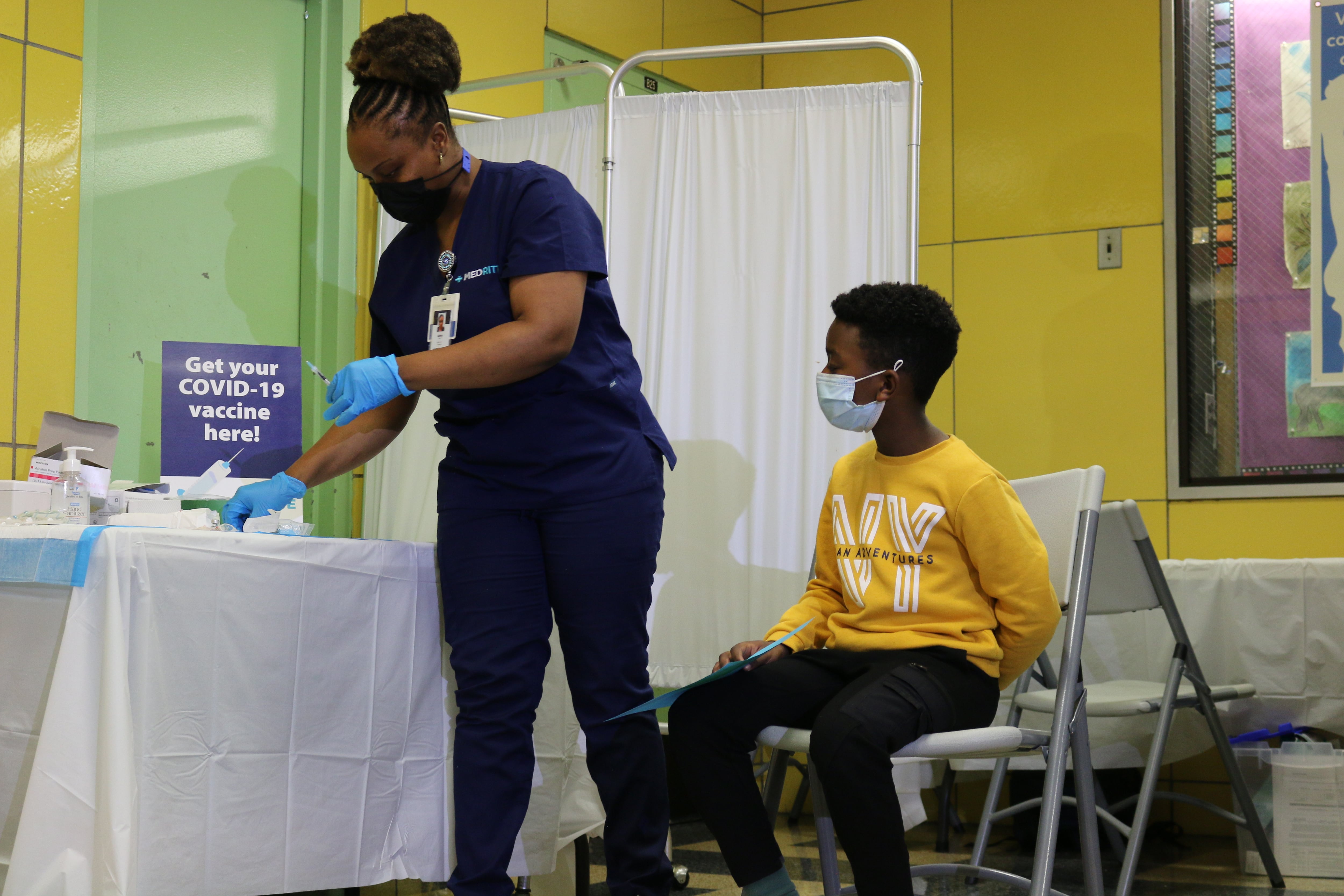How many New York City public school students are vaccinated?
Education department officials won’t say, even though they use those statistics to determine how many students to test for COVID at each school. The city has not provided school-level vaccination rates despite a City Council law that requires the department to do so. The city also missed its Wednesday deadline in responding to Chalkbeat’s public records request for the data.
That information is particularly relevant now, as Gov. Kathy Hochul weighs whether to end school mask mandates. A decision is expected in early March, and vaccination rates are one of the factors Hochul has said she will consider.
The city does publish some information about how many children are vaccinated, but school-level data is crucial. Many city students travel to attend schools outside of their neighborhoods. Some public health experts say vaccination status is a key measure — along with transmission rates and other public health statistics — in determining whether measures such as masks can be lifted. And national union officials have also called for ending mask requirements on a school-by-school basis, depending on the individual school’s vaccination rate.
New York City education department officials said they are making sure to comply with any student privacy laws before releasing school-level vaccination information.
“This is sensitive data and we are currently working to balance transparency with the privacy of our students prior to the release of this data,” said education department spokesperson Nathaniel Styer.
City health department data show the vaccination rate for 5- to 17-year-olds is just under 54%. But there are stark disparities across the five boroughs. In parts of Manhattan, including Chinatown, TiBeCa, and the Upper East Side, 99% of children have gotten at least one dose. In Bedford Stuyvesant, Brooklyn, it’s 39%. In the Tottenville neighborhood on Staten Island, the rate is 27%.
Public health experts said that school-level vaccination rates might help policy makers understand where students might face more disruptions to learning because of illnesses — especially if the state moves to end mask mandates.
“When you remove the mask, whether you like it or not, you will have some level of uptick in infection,” said Dr. Donald Alcendor, an assistant professor of microbiology and immunology at Meharry Medical College in Nashville. But the impacts, he said, are “going to be very different” in places with higher versus lower vaccination rates.
The data could also give important clues about where to increase outreach efforts to get more children vaccinated, Alcendor said.
“If they’re left on their own to try to change this, it’s never going to change,” he said of school communities with low vaccination rates. “What is being done for them?”
The American Academy of Pediatrics, while emphasizing the importance of in-person school, also notes that transmission of COVID is possible in classrooms — and that the risk is higher for the unvaccinated. The academy still recommends universal masking in schools. The head of the Centers for Disease Control and Prevention has also called for mask requirements to stay in place, since infections remain high.
Dr. Denis Nash, an epidemiology professor at the CUNY Graduate School of Public Health & Health Policy, highlighted the importance of having multiple layers of protection against COVID in schools. That includes ventilation, vaccinations, and masking, he said.
“When moving to making masks optional, it is important to make sure that these other layers are shored up,” he said. “We definitely need higher vaccination rates among children and adolescents.”
The education department has not responded to multiple requests for student and school-level vaccination rates, directing Chalkbeat to file a request for public information. Records custodians said they anticipated to respond to the request by Feb. 16, but did not do so by 5 p.m.
“We are reviewing and hoping to send you responsive data soon,” officials wrote in an email.
The education department already uses student vaccination rates to determine how many should be tested for COVID in school. The city’s weekly surveillance at each school includes 20% of the unvaccinated student population, or 10% of student enrollment — whichever is higher.
Additionally, the City Council in December passed legislation requiring the education system to regularly disclose vaccination rates, including breakdowns by school, race, grade-level, and whether students have completed two doses.
City Council member Rita Joseph, who chairs the education committee, said the education department “has an obligation,” to disclose student vaccination rates.
“Not doing so is unfair to students, educators, and parents,” she said in a statement. “It’s simple: transparency in data results in better public policy decisions.”
Alex Zimmerman contributed.






